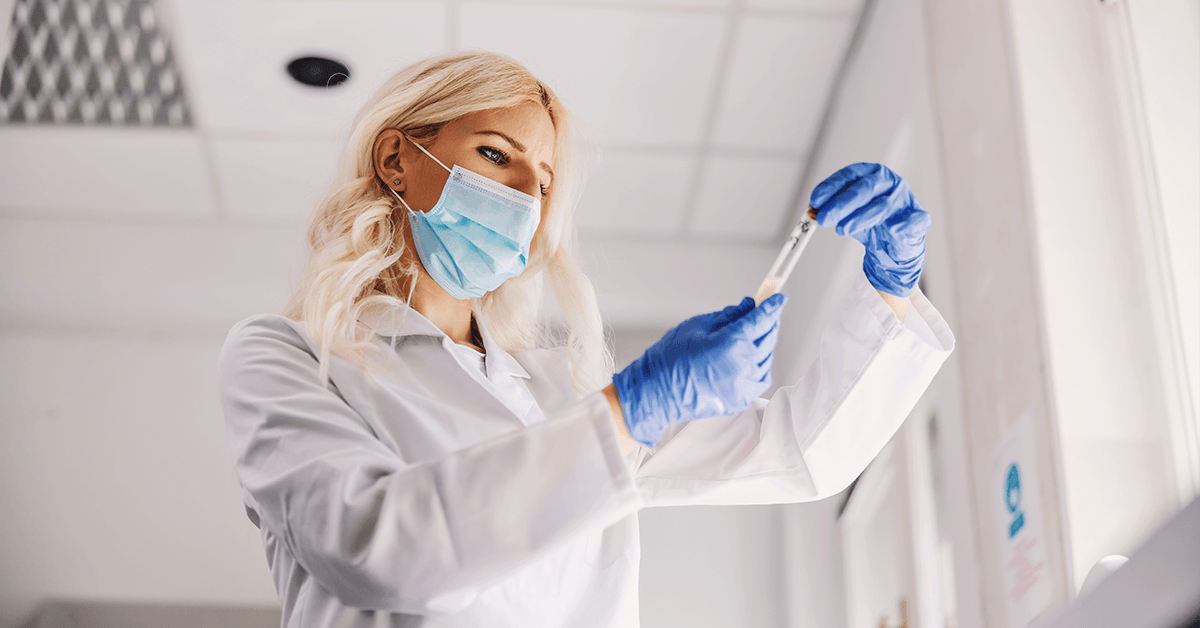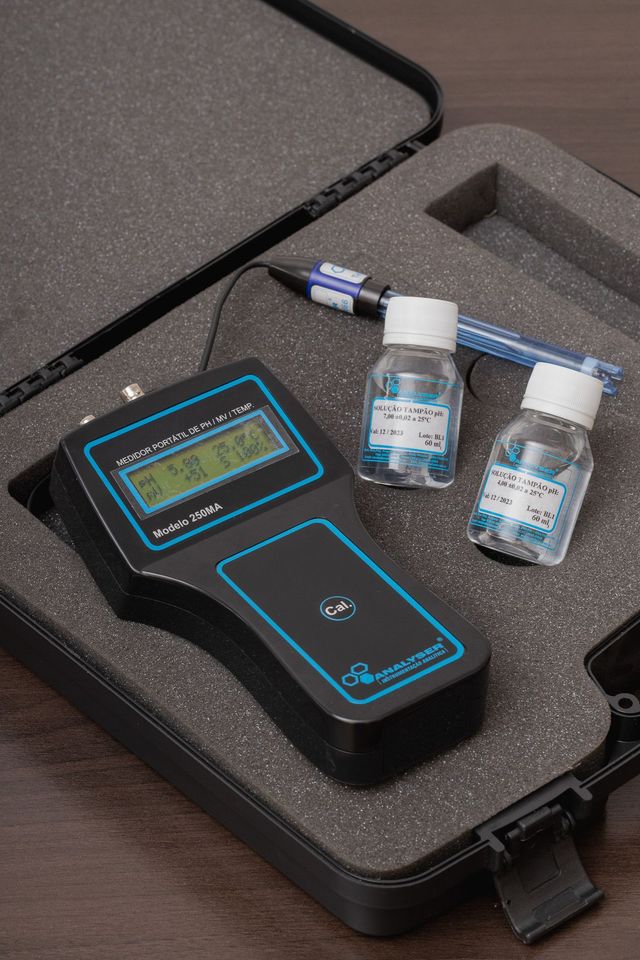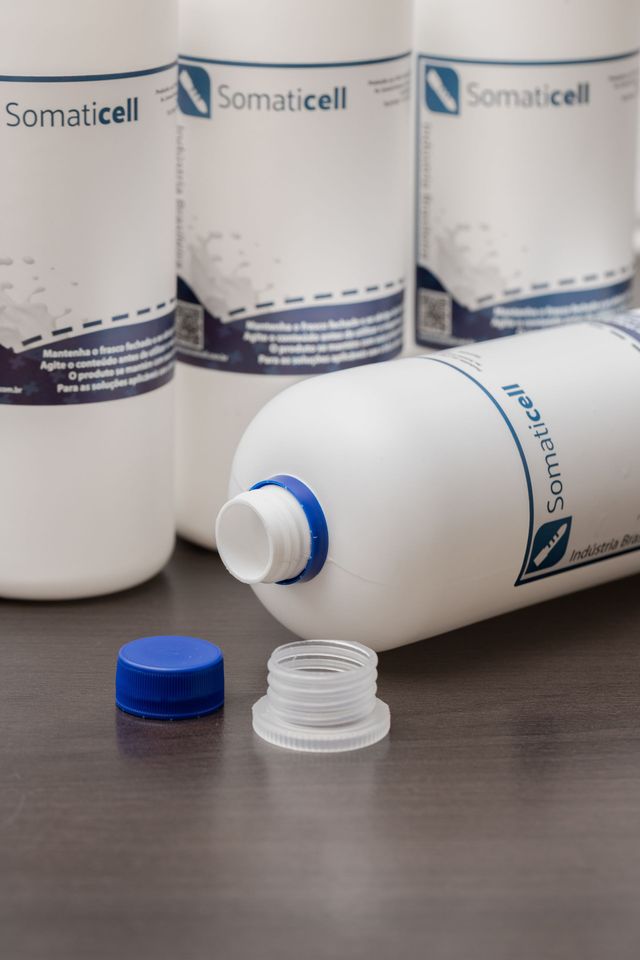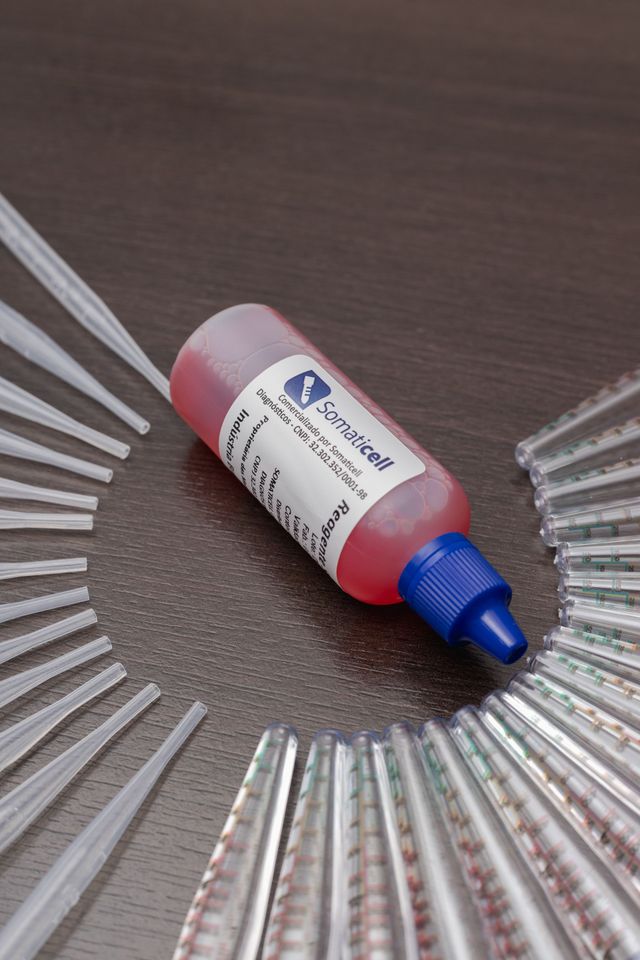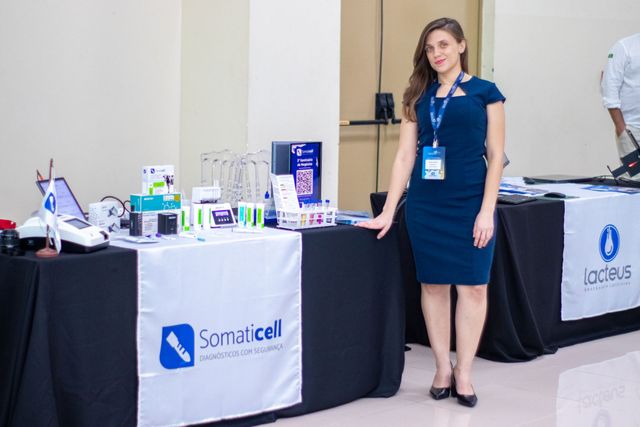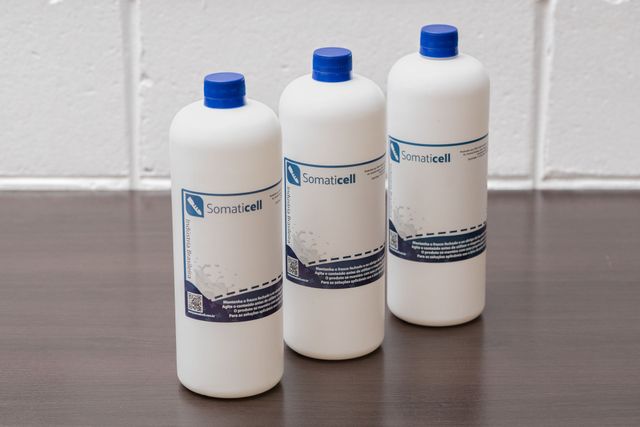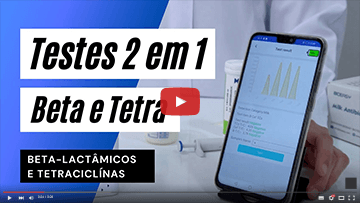Cow's whey milk fraud: How to protect yourself?
Cultivating good practices in the production system is essential to prevent these problems.
O controle de qualidade é uma questão que está sendo levada a sério nos mais diversos segmentos da indústria em escala mundial. Em especial, na área de alimentos. Desse modo, as indústrias voltadas para os laticínios estão de olhos abertos para a detecção de qualquer tipo de fraude no leite ou vestígio de uma qualidade inferior.
Considering that the losses are the most diverse, these dairy producers seek to reduce the incidence of altered products. Thus, analytical methods are used to detect failures.
Thus, techniques are applied that unite chemical and biological knowledge about the composition of milk and its derivatives. It is worth mentioning that fraud affects the most diverse levels of an industry, that is, from the reduction of yield and reduction of nutritional value, to even bad consequences for public health.
Especially in the Brazilian scenario, the concern with fraud is notorious. This is because, in the last decade, the country has become one of the protagonists in the production of milk with a production of 35,1 billion liters in 2017.
This rapid development has also opened up loopholes for producers with bad intentions to profit more from dairy products.
Between 2007 and 2018, milk was the most fraudulent food in the country, reaching a rate of 38% among adulterated foods.
Among the most used methods, we can mention that fraud through the addition of cheese whey is one of the champions of adulteration.
In view of these numbers, in this article we will cover the following topics:
- What can be considered milk fraud?
- Main forms of milk fraud
- Impacts on milk fraud
- Detection methods
- How to protect yourself from serum addition fraud
Keep reading!
What can be considered milk fraud?
Firstly, adulteration of milk has as main objective to increase the volume of this product to yield more.
Another common situation was skimming to use the cream in the production of cream.
Over the years, new forms of adulteration have been discovered, such as the addition of serum, preservatives, neutralizing agents and reconstituting density and cryoscopy.
De acordo com a legislação brasileira, a fraude no leite pode ser qualquer atitude que se tome sobre o produto que torne o leite de baixa qualidade e que traga consequências ruins para o consumidor.
That is, in Brazil, it can be configured as fraud:
- Adding water;
- Withdrawal of components (with the exception of skimmed and semi-skimmed milk);
- Adding extraneous elements to the composition;
- Inadequate labeling (with information on milk greater than what is present);
- Raw milk passed on as pasteurized;
- Exposure to consumption without due guarantees of inviolability;
- Milk with antibiotic residues.
Main forms of milk fraud
There are two main reasons for transferring milk with alterations: for financial gain or due to inappropriate hygiene conditions in the entire milk production chain.
This can be done by adding or removing substances from milk or those that are foreign to it.
There is no way to talk about milk fraud without mentioning these situations. Therefore, we will put here the main forms of adulteration.
Next, we will focus on the issue related to fraud by adding cheese whey, our main focus in this article.
Addition of preservatives
In the food industry, preservatives are pioneers to prevent product degradation, however they should not be added to milk.
Therefore, the addition of bicarbonates, formaldehyde, boric acid, hydrogen peroxide, potassium bichromate, hypochlorite and salicylic acid is considered fraud.
These substances aim to paralyze microbial activity and keep milk in its original state.
Antibiotic residues
In many of our articles we always focus on how the use of antibiotics can change the composition of milk.
In particular, we reached a crucial point: according to the Ministry of Agriculture, Livestock and Supply, there is no permission to send milk to industrial establishments for animals that are using antibiotics that are eliminated through milk.
The recommendation is that these animals are removed from production until the use of veterinary medications is discontinued and the grace period provided for in the package leaflet is over when all the guidelines prescribed by the veterinarian are followed.
This is a way of ensuring that drug residues do not exceed the levels established in the regulations.
However, not all producers respect the recommendations.
So, when the analysis is carried out using analytical methods and a residue of some antibiotic is found in the milk, the milk is considered adulterated and unsuitable for industrialization, therefore it must be discarded.
Mixture of milks of different species
Another very common problem is the illegal mixing of cheaper milk with more expensive milk.
These situations occur mainly in goat, sheep and buffalo milk.
These animals have more expensive products, and then there are producers who mix cow's milk with the milk of these animals.
Inappropriate labeling
On the packaging it is possible to find the composition of the milk, batch, expiration date, and many other information regarding the characteristics of this product.
But did you know that misleading labeling exists?
There are producers in Brazil who place false claims on packaging, omit added ingredients or change information on net weight.
Failures in pasteurization
When there are flaws in controlling the temperature and cooling of milk after milking, it is possible that pasteurization is inefficient.
This activity aims to eliminate pathogenic microorganisms that may contaminate milk.
Thus, incorrect pasteurization causes damage to the population, since the consumer is exposed to pathogenic microorganisms, which can be considered fraud.
Adding cheese whey to milk
As described in the topic about adding water, the addition of cheese whey is intended to increase the volume of milk.
This type of practice is illegal both in Brazil and in developed countries when it comes to transferring whole milk.
The addition of cheese whey is allowed for the production of a dairy drink, which is not milk.
Thus, the addition of cheese whey to pasteurized, sterilized or powdered milk is considered fraud.
The great concern that occurs is due to the high availability of this by-product in cheese and dairy products that undergo the draining process. Therefore, there would be an almost zero cost, being quite attractive.
For those who aim for profit instead of correctly following the quality control standards for raw milk, it is possible that this producer adds cheese whey to the milk.
However, the addition of cheese whey to milk can be quite harmful for consumers.
In this way, those who buy the product as “pure” will be being deceived, because in cases of prolonged consumption, this will lead to malnutrition, especially in infants.
So the use of the serum is prohibited anyway? The answer is no! In fact, there are several legal products that use this by-product.
Among them, we have fermented and chocolate products, which have whey as a common ingredient.
Main reasons to prevent and control the disease
Impacts on milk fraud
So far, we've looked at ways to cheat milk. Now let's see the real consequences for consumers when milk fraud occurs:
Decreased food quality and safety
Given that milk fraud can involve the addition of non-traditional chemical contaminants, these practices can increase risks related to food safety.
These harmful substances, together with sanitation conditions, as well as poor hygiene, can result in products with dubious quality and safety.
Decreased nutritional value
Even if the adulteration is done with the addition of a harmless substance, such as water, starch or cheese whey, the nutritional value of the milk will change.
So fat values for example can be reduced when illegal skimming takes place.
Therefore, people who depend on milk lipids may not be consuming adequate amounts for their nutrition.
Reflection on consumer health
Undoubtedly, the addition of adulterants to milk can have several consequences for the health of the consumer.
Let's look at some consequences:
- Addition of sodium chloride (table salt): reflect in the increase of hypertension and heart problems.
- Added sugar: contribute to raising blood sugar levels.
- Adding water: reduces nutritional value
- Addition of formaldehyde: can induce acute intoxication, causing irritation, and is still considered a carcinogenic element.
- Insertion of hydrogen peroxide: damages gastrointestinal cells, leading to gastritis, inflammation of the intestine and diarrhea.
- Chlorine insertion: causes low blood pressure, nausea, vomiting and abdominal pain.
Ways to detect milk fraud
As formas de detecção de fraude no leite são as mais diversas e ocorrem em laboratório.
Through analytical techniques, it is possible to evaluate several parameters to draw conclusions about the composition of milk.
We separate here the main methods of analysis:
Acidity analysis
For the verification of the acidity of milk, which has its own normal pH values when it has no adulterations, it is possible to draw conclusions by testing alcohol and alizarol.
Another way is through testing done by the Dornic method. In it, the acidity is evaluated by the presence of lactic acid that increases from the degradation of lactose in the microbial proliferation.
Milk density analysis
To verify the presence of water, skimming or addition of starches, it is possible to carry out the procedure with a thermolactodensimeter.
Freezing point depression analysis or cryoscopy
Another way to detect water in milk is freezing point depression analysis or cryoscopy.
Even cases with small amounts of added water can be detected with this technique.
Chromatographic techniques
Chromatographic techniques are widely used on the bench, in view of their efficiency. Through it, it is possible to separate and identify components of a mixture.
That is, analyzes with high performance liquid chromatography and gas chromatography can assess the presence of food preservatives, whey addition and foreign fats in dairy products.
Polymerase Chain Reaction
When there is suspicion of mixing milk from different animal species, a very classic DNA analysis method is used, PCR (Polymerase Chain Reaction).
Through molecular identification, it is possible to distinguish the types of milk present, be it cow, sheep, goat or buffalo.
For the same purpose, it is still possible to use the enzyme immunoassay (ELISA), polyacrylamide gel electrophoresis (PAGE) and matrix-assisted laser ionization/desorption (MALDI).
How to protect yourself from milk fraud by adding whey?
Undoubtedly, the best method to protect yourself is the analysis of bench samples.
In times when there are so many situations of fraud, trusting only the other's word can be a mistake.
We have briefly seen how to detect fraud by different types of adulteration, so now let's understand in more detail when it comes to fraud by adding cheese whey.
Well, the most used analytical method is through the determination of glycomacropeptide (GMP). This technique results in the breaking of the k-casein peptide bond between 105-106 Phe-Met amino acids. This cleavage forms para-k casein (1-105) which remains in casein micelles and glycomacropeptide (106-169) which remains in serum.
Chromatography techniques can also be very efficient for detecting cheese whey in milk. In the HPLC type method (High Performance Liquid Chromatography) it is possible to identify the presence of cheese whey in milk.
Knowing that the results should be as assertive as possible, it is necessary to trust your analyzes in those who have experience, as well as authority in the area.
For this, count on Somaticell. We work with the identification of whey in milk through the use of HPLC, always bringing the best results so that you, the producer, can have the best yields on your products!
With our whey addition identification solution, your milk production chain will never be the same.
To find out more about our services, get in touch with us and talk to one of our specialists!
Monitor your herd frequently to control bovine mastitis
Através das informações vistas neste artigo, fica claro que a mastite é uma doença que compromete muito a saúde das vacas leiteiras e, com isso, a saúde do negócio.
Therefore, milk production can be challenging, but when it is well managed, it can be profitable and satisfactory for the farmer.
However, it is necessary to pay attention, in the first place, to forms of prevention. They will be essential to maintain production with a quality standard, without losses and without compromising the business image.
Thus, investing in small changes can often seem like a cost, when in fact they are ways to save unnecessary expenses with sudden changes, veterinarians, disposal of milk and production cows.
So, use these tips to your advantage. Monitor your farm and your producing animals, always carrying out a quality and hygiene inspection in the environments.
Also don't forget to test the herd frequently. Remember that the case that causes the most damage in the herd is subclinical mastitis. Since it does not show symptoms, but it can easily spread and reduce production.
Therefore, look for practical, efficient methods that meet the need for a quick diagnosis for assertive and agile decisions, such as Somaticell CCS, which in less than 3 minutes will give you the milk somatic cell count with numerical and assertive result , which can be done with milk from the tank, individual CCS or even CCS per teat.
Para te ajudar, a Somaticell possui soluções para diagnosticar mastite e resíduos de antibiótico no leite.
Our products cover 100% detection of all antimicrobials, described in the Ministry of Agriculture, Livestock and Supply.
To deliver the best quality, we work with a team of more than twenty researchers, who are dedicated to the development of products for the food safety line.
E para uma saída moderna, criamos o
Somaticel® CCS, pensado para diagnósticos de mastite de maneira ágil e com precisão. Esse kit permite a avaliação da amostra do leite com base em um conjunto que viabiliza a contagem imediata de CCS, com o desempenho comparável à contagem feita em laboratório. Quer entender mais sobre esta solução? Então,
fale com a gente! Estamos esperando por você.
Good practices and main precautions
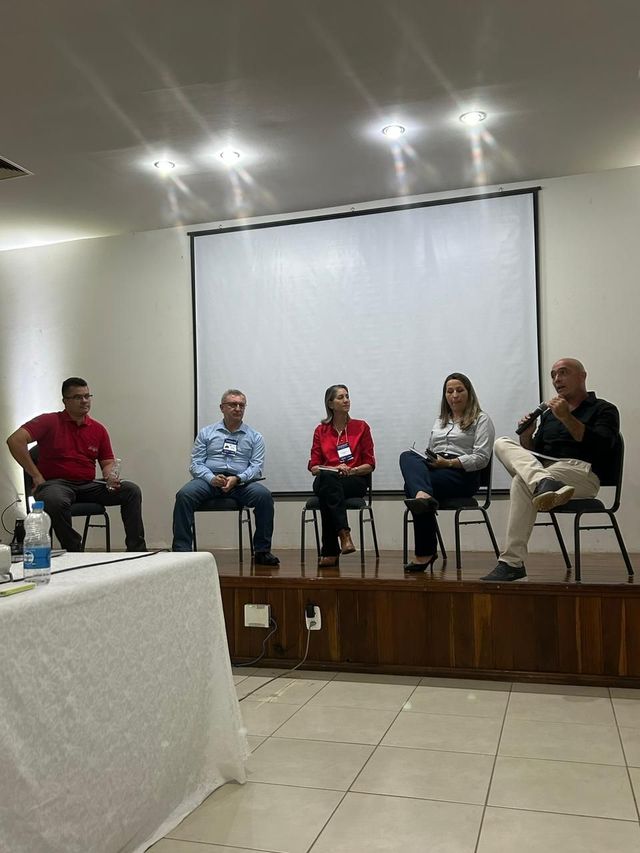
Conheça nosso App
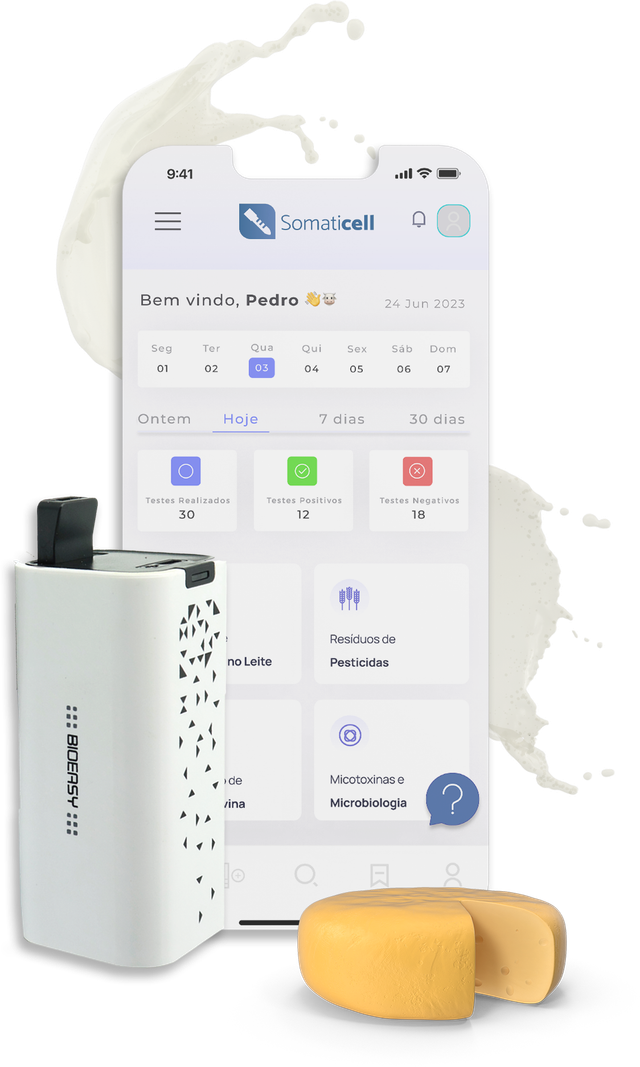
Our Educational Videos
Somaticell on Social Networks


